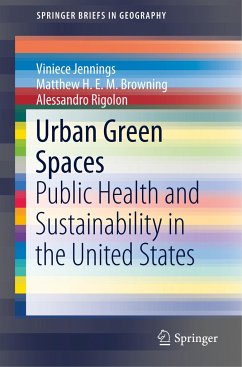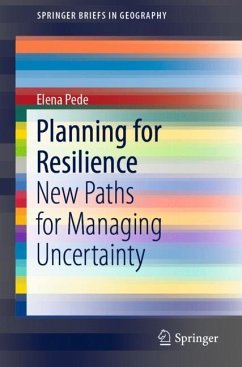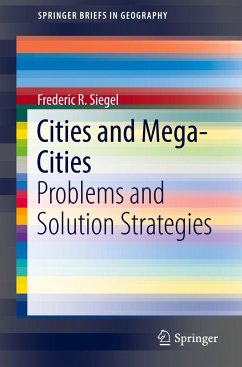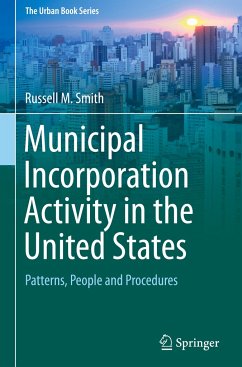
Urban Infrastructure Research
A Review of Ethiopian Cities

PAYBACK Punkte
19 °P sammeln!
This bookreviews contemporary research on urban infrastructure in 76 Ethiopian cities.It examines urban infrastructure issues in these cities and covers a wide rangeof topics from sustainability and smart cities to research methods employed byurban infrastructure investigators with regard to Ethiopian cities. Research onurban infrastructure legitimacies and modalities has established its valueworldwide in recent years, though it is still fairly young in the Ethiopiancontext.The first chapter outlines ongoing issues of debate concerning urbaninfrastructures, including but not limited to discour...
This bookreviews contemporary research on urban infrastructure in 76 Ethiopian cities.It examines urban infrastructure issues in these cities and covers a wide rangeof topics from sustainability and smart cities to research methods employed byurban infrastructure investigators with regard to Ethiopian cities. Research onurban infrastructure legitimacies and modalities has established its valueworldwide in recent years, though it is still fairly young in the Ethiopiancontext.
The first chapter outlines ongoing issues of debate concerning urbaninfrastructures, including but not limited to discourses on sustainability, smartcities, innovative financing methods, and potential partnerships. Urbaninfrastructure issues in Ethiopian cities are examined in the second chapter, whilethe third chapter presents a review of the most relevant literature forresearchers. Findings show that the citations in the research reports aremainly from the materials available over the internet, including WHO,UN-Habitat and unpublished local materials. The fourth chapter identifiespatterns in the findings and recommendations of the research reports discussed.The results reveal that there is a wider gap between supply and demand withregard to urban infrastructure in Ethiopian cities, a situation that is furtheraggravated because of the growing urban population and already existingbacklogs. The fifth chapter reviews the essential methods employed by urbaninfrastructure investigators in Ethiopian cities. In this regard, the cross-sectionalstudy method with the use of survey method has been broadly adopted amonginvestigators.
Lastly, the book presents a summary and recommendations. It was observed that theurban infrastructure boom in Ethiopia is primarily concentrated in the keycities, and the current pattern of urban infrastructure provision does notincorporate the notion of sustainability. Hence, the book calls for setting theagenda of future researchon urban infrastructure and services in Ethiopiancities together with the universities, private sector and government, who shouldideally collaborate to produce the knowledge needed to improve quality of life,welfare, productivity, and economic growth.
The first chapter outlines ongoing issues of debate concerning urbaninfrastructures, including but not limited to discourses on sustainability, smartcities, innovative financing methods, and potential partnerships. Urbaninfrastructure issues in Ethiopian cities are examined in the second chapter, whilethe third chapter presents a review of the most relevant literature forresearchers. Findings show that the citations in the research reports aremainly from the materials available over the internet, including WHO,UN-Habitat and unpublished local materials. The fourth chapter identifiespatterns in the findings and recommendations of the research reports discussed.The results reveal that there is a wider gap between supply and demand withregard to urban infrastructure in Ethiopian cities, a situation that is furtheraggravated because of the growing urban population and already existingbacklogs. The fifth chapter reviews the essential methods employed by urbaninfrastructure investigators in Ethiopian cities. In this regard, the cross-sectionalstudy method with the use of survey method has been broadly adopted amonginvestigators.
Lastly, the book presents a summary and recommendations. It was observed that theurban infrastructure boom in Ethiopia is primarily concentrated in the keycities, and the current pattern of urban infrastructure provision does notincorporate the notion of sustainability. Hence, the book calls for setting theagenda of future researchon urban infrastructure and services in Ethiopiancities together with the universities, private sector and government, who shouldideally collaborate to produce the knowledge needed to improve quality of life,welfare, productivity, and economic growth.














